|
Reprod Health.
2006 Apr 27;3:3.
The prolongation of somatic support in a
pregnant woman with brain-death: a case report
Souza JP,
Oliveira-Neto A,
Surita FG,
Cecatti JG,
Amaral E,
Pinto e Silva JL.
Intensive Care Unit, Department of Obstetrics and
Gynecology, School of Medical Sciences, State University of
Campinas, Campinas, São Paulo, Brazil. souzajpd@unicamp.br
BACKGROUND:
Medical literature has increasingly reported cases of
maternal brain death during pregnancy. This is a rare
situation which demands the decision and, depending on the
gestational age, the implementation of a set of measures to
prolong the homeostasis of the human body after brain death
for the purpose of maintaining the foetus alive until its
viability.
CASE PRESENTATION:
A 40 year old woman suffered an intracranial
haemorrhage
during the 25th
week of pregnancy. Despite neurosurgical drainage
of a gross intraparenchymatous haematoma, the patient
developed brain death. Upon confirmation of this
diagnosis, she received full ventilatory and nutritional
support, vasoactive drugs, maintenance of normothermia,
hormone replacement and other supportive measures required
to prolong gestation and improve the survival prognosis of
her foetus. All decisions regarding the patient's treatment
were taken in consensus with her family. She also received
corticosteroids to accelerate foetal lung maturity. During
the twenty-five days of somatic support, the woman's
condition remained stable; however, during the last seven
days the foetus developed oligohydramnios and
brain-sparring, which led the medical team to take the
decision to perform a Caesarean section at that moment.
After delivery, the patient's organs were removed for
donation. The male infant was born weighing 815 g, with an
Apgar score of 9 and 10 at the first and fifth minutes,
respectively.
The infant was admitted to the neonatal intensive care unit,
but did not require mechanical ventilation and had no major
complications.
He was
discharged at 40 days of life, with no sequelae and weighing
1850 g.
CONCLUSION:
These results are in accordance with findings from previous
studies and case reports suggesting the appropriateness and
safety of extended somatic support during pregnancy under
certain circumstances. They also suggest the need for prompt
diagnosis of brain death before the occurrence of
physiological degeneration, rapid evaluation of foetal
status and the decision of the family together with the
medical team to prolong maternal somatic support. The
occurrence of maternal brain death is a tragedy, but it may
also represent a challenging opportunity to save the life of
the foetus and, in addition, permit donation of the maternal
organs.
__________________________________________________________

Obstet Gynecol Surv. 2000 Nov;55(11):708-14
Irreversible maternal brain injury during
pregnancy: a case report and review of the literature
Feldman DM,
Borgida AF,
Rodis JF,
Campbell WA.
Department of Obstetrics and
Gynecology, University of Connecticut Health Center,
Farmington 06030-2950, USA. dfeldman@nso2.uchc.edu
Maternal brain death or massive
injury leading to persistent vegetative state during
pregnancy is a rare event. Since 1979,
11 cases,
including the current one, of irreversible maternal brain
damage in pregnancy have been reported. In all but
one, the pregnancies were prolonged with a goal of achieving
delivery of a viable infant. Current advances in
medicine and critical care enable today's physician to offer
prolonged life-support to maximize the chances for survival
in the neonate whose mother is technically brain dead. We
present a case at our institution and review all previously
published cases in the English literature for comparison as
well as make management recommendations .
__________________________________________________________
Journal of the American Medical Association

JAMA. 1988 Aug 12;260(6):816-22.
Maternal brain death during pregnancy. Medical and ethical issues.
Field DR,
Gates EA,
Creasy RK,
Jonsen AR,
Laros RK Jr.
Department of Obstetrics,
Gynecology, University of California, San Francisco
94143-0132.
We present in detail a case of a
27-year-old primigravida
who was
maintained in a brain-dead state for nine weeks.
An apparently normal and healthy male infant weighing 1440 g
was delivered.
The newborn did well and was found to be growing and
developing normally at 18 months of age. Although
the technical aspects of prolonged life support are
demanding and the economic costs are very high (+217,784),
there are ample ethical arguments justifying the separation
of brain death and somatic death and the maintenance of the
brain-dead mother so that her unborn fetus can develop and
mature.
KIE: Physicians and an ethicist at
the University of California, San Francisco, present the
details of the case of a pregnant, brain-dead woman whose
vital functions were maintained for nine weeks until the
delivery of a healthy infant at 31 weeks' gestation. Despite
the technical difficulties involved and the economic costs
incurred ($183,031 for maternal care and $34,703 for
neonatal care), the authors conclude that ethical
considerations support the decision on care. They argue that
the woman was not injured; that nonmaleficence and
beneficence toward the fetus require a rescue attempt if
there is a reasonable chance of reaching fetal maturity;
that maternal medical care may be more cost effective than
prolonged neonatal support; and that the father's wishes
were respected. Rather than proposing guidelines, they hold
that decisions on prolonged maternal support should be based
on the circumstances of each case.
__________________________________________________________
Journal of the American Medical Association

JAMA. 1982 Sep 3;248(9):1089-91
Life support and maternal death during
pregnancy
Dillon WP,
Lee RV,
Tronolone MJ,
Buckwald S,
Foote RJ.
KIE: The authors are physicians
affiliated with the State University of New York at Buffalo
and the Children's Hospital of Buffalo. They describe the
clinical management of
two brain-dead
pregnant women
and suggest guidelines to help physicians decide whether to
treat such women. Based on the dramatically increasing
chances for fetal survival from the 24th to the 27th weeks
of gestation, they recommend vigorous life support during
this period to permit fetal viability and prognosis to be
assessed. Fetuses
of 28 weeks should be delivered by cesarean section as soon
as practicable after confirmation of maternal brain death.
__________________________________________________________
|
Promoting thoughtful, balanced reflection on the
ethical and social issues of medicine and medical
science |
  |
Hastings Cent Rep. 1986 Feb;16(1):12-7
On dying more than one death
Shrader D.
Death (with a capital D) can best
be understood as a series of distinct but related deaths.
For example,
a pregnant woman was found to be brain-dead but her vital
functions were artificially sustained for nine weeks until
her fetus could be delivered, after which the machines were
removed and she died a second, conceptually distinct death.
This procedure is probably justifiable, but any legislation
or policy regarding such cases should be flexible and should
require consent.
KIE: It is argued that death
should be understood as encompassing a series of distinct
but related events. Human beings are viewed as a composite
of two intimately related but distinguishable components, as
both persons and biological entities. Thus, a brain dead
patient can be considered in some sense alive and in some
sense dead. This thesis forms the basis for an analysis of a
case in which a brain dead pregnant woman's vital functions
were artificially sustained until her fetus could be
delivered alive, after which the woman's life support
systems were disconnected and she ceased breathing. The
author holds that this procedure was morally justifiable. He
suggests that a multiple-deaths analysis may provide a
general framework for discussion of the conditions that
justify maintenance of biological functions in neocortically
dead human beings, but cautions that any legislation or
policy regarding such cases should be flexible and should
require consent.
__________________________________________________________
Revista médica de Chile
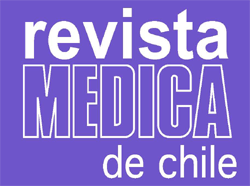
Rev Med Chil. 1998 Apr;126(4):450-5.
Maternal brain death during pregnancy
[Article in Spanish]
Beca
JP,
Wells
W,
Rubio
W.
Facultad de Medicina, Universidad
de Chile.
The case of a pregnant patient who
had a massive intracraneal haemorrhage at 18 weeks of
gestation is presented.
Patient's neurological damage evolved to brain death, but
the fetus continued in good condition. The
decision of withdrawing life support or to continue
supporting the mother's life to allow fetal development
aroused difficult ethical questions, both to relatives and
professionals. This is an exceptional situation of a heart
beating cadaver and a non viable fetus whose life depends on
the continuation of treatments that are considered as
experimental. A good decision should be based on the respect
to a body in brain death, the fetal right to life, family's
wishes and values, the use of experimental treatments, and
the rational use of a public hospital's resources. The
conclusion was that the continuation of life support
treatments was not an ethical obligation. Withdrawing life
support to allow fetal death in this case means foregoing an
experimental treatment and to respect family's autonomy and
the right of the patient's death with dignity.
Similar cases need to be discussed
with a multidisciplinary analysis in their own
particularity.
__________________________________________________________

Crit Care Med. 2003 Apr;31(4):1241-9.
Extended somatic support for pregnant women
after brain death.
Powner DJ,
Bernstein IM.
Department of Neurosurgery,
University of Texas, Houston, TX, USA.
OBJECTIVE:
To review case reports of pregnant women who have been
supported after brain death until successful delivery of
their infants. From these reports and other literature about
brain death, normal physiologic changes of pregnancy, and
specific needs for fetal development, recommendations were
made to assist in supporting pregnant women after brain
death until delivery of a mature fetus who is likely to
survive.
DATA SOURCES:
Personal files and experiences, MEDLINE review of case
reports and publications about physiologic changes present
during normal pregnancy and after brain death, and the
critical needs for fetal development were included.
DATA EXTRACTION:
Eleven reports of ten patients comprise the accumulated
clinical experience. Hypotension, requiring fluid
administration and inotropic/vasopressor therapy, occurred
in all the mothers, and in six cases, was the reason for
urgent delivery.
The longest period of support was 107 days, from 15 to 32
wks of gestation. Two mothers also became organ
donors. Recurrent infections, thermolability, and other
complications common to prolonged ICU care were encountered.
All infants survived. One had congenital abnormalities
caused by phenytoin use by the mother. When followed, all
others developed within normal growth and mental variables.
These cases plus literature citations noted above were used
to develop recommendations for maternal/fetal care.
CONCLUSION:
Preservation of uterine/placental blood flow is the most
important priority during somatic support. Imprecise
autoregulation of the uterine vasculature during maternal
hypoxemia or hypotension makes this goal a significant
challenge. Special considerations for nutrition; medication
use; cardiovascular, respiratory, or endocrine therapy;
fetal monitoring; hormone replacement; and ethical concerns
are discussed.
__________________________________________________________
Critical Care Clinics
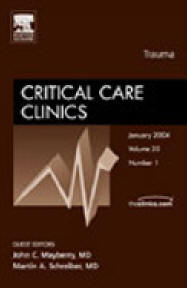
Crit Care Clin. 2004 Oct;20(4):747-61
Cardiopulmonary resuscitation and somatic
support of the pregnant patient.
Mallampalli A,
Powner DJ,
Gardner MO.
Section of Pulmonary and Critical Care Medicine, Baylor
College of Medicine, Ben Taub General Hospital, 1504 Taub
Loop, 6th Floor, Houston, TX 77030, USA. antara@bcm.tmc.edu
Cardiopulmonary arrest during pregnancy is a rare event that
critical care clinicians must be prepared to manage. The
causes of cardiopulmonary arrest during pregnancy,
recommended modifications to cardiopulmonary resuscitation
protocols that are specific to pregnancy, indications for
and timing of perimortem cesarean delivery, and the expected
fetal outcomes are reviewed. Rarely, brain death of a
pregnant patient may occur in which continued support of the
mother is possible to prolong the pregnancy and improve
fetal outcome. Prolonged somatic support of pregnant
patients who are brain dead presents specific management
challenges, but has been accomplished. The physiologic
changes that occur after brain death and recommendations for
somatic support of the brain dead pregnant patient also are
reviewed.
__________________________________________________________

Crit Care Med. 2005 Oct;33(10 Suppl):S325-31.
Cardiac arrest in pregnancy and somatic
support after brain death.
Mallampalli A,
Guy E.
Section of Pulmonary and Critical
Care Medicine, Department of Medicine, Baylor College of
Medicine, Houston, TX, USA.
OBJECTIVE: To review the important
causes of cardiopulmonary arrest during pregnancy and the
recommended modifications to resuscitation protocols when
applied to pregnant patients, including the indications for
perimortem cesarean section and the expected fetal outcomes,
and to review the literature regarding extended somatic
support after brain death during pregnancy. DATA SOURCES:
MEDLINE review of publications relating to cardiac arrest
and resuscitation in pregnancy, physiologic changes after
brain death, and attempted somatic support of brain-dead
pregnant women. CONCLUSIONS: Cardiac arrest during pregnancy
is rare, but it is important to recognize the causes, which
may be either unrelated to pregnancy or unique to the
pregnant woman. For the most part, the resuscitation
protocol is the same as for nonpregnant victims of cardiac
arrest, with a few important modifications, including
especially the need for relieving aortocaval compression by
the gravid uterus, the need for rapid intubation, and the
importance of rapid perimortem cesarean delivery when
indicated. In those rare cases of brain death occurring in a
pregnant patient, continued somatic support of the mother
may be possible, even for prolonged periods, to extend the
pregnancy and further fetal maturation. The expected
physiologic changes after brain death, challenges to
successful somatic support, and specific recommendations
regarding organ support of the brain-dead pregnant woman are
reviewed.
__________________________________________________________
Neurocritical
Care
Neurocrit Care. 2005;3(2):99-106
Maternal brain death and somatic support.
Farragher RA,
Laffey JG.
Department of Anaesthesia,
University College Hospital, and Clinical Sciences
Institute, National University of Ireland, Galway, Ireland.
Brain death is a concept used in situations in which
life-support equipment obscures the conventional
cardiopulmonary criteria of death, and it is legally
recognized in most countries worldwide.
Brain death
during pregnancy is an occasional and tragic occurrence. The
mother and fetus are two distinct organisms, and the death
of the mother mandates consideration of the well-being of
the fetus. Where maternal brain death occurs after the onset
of fetal viability, the benefits of prolonging the pregnancy
to allow further fetal maturation must be weighed against
the risks of continued time in utero, and
preparations must be made to facilitate urgent cesarean
section and fetal resuscitation at short notice. Where the
fetus is nonviable, one must consider whether continuation
of maternal organ supportive measures in an attempt to
attain fetal viability is appropriate, or whether it
constitutes futile care. Although the gestational age of the
fetus is central to resolving this issue, there is no clear
upper physiological limit to the prolongation of somatic
function after brain death. Furthermore, medical experience
regarding prolonged somatic support is limited and can be
considered experimental therapy. This article explores these
issues by considering the concept of brain death and how it
relates to somatic death. The current limits of fetal
viability are then discussed. The complex ethical issues and
the important variations in the legal context worldwide are
considered. Finally, the likelihood of successfully
sustaining maternal somatic function for prolonged periods
and the medical and obstetric issues that are likely to
arise are examined.
__________________________________________________________
Journal of transplant coordination
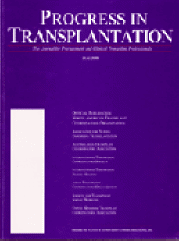
J Transpl Coord. 1997 Sep;7(3):103-5.
dead Organ recovery following childbirth by a
brain-mother: a case report.
Lewis
DD,
Vidovich RR.
Ohio Valley LifeCenter,
Cincinnati, USA.
Little information is available in
the medical and nursing literature concerning organ recovery
from brain-dead, pregnant individuals. Many
healthcare professionals might rule out such patients as
potential donors, especially if childbirth is a possibility.
This article presents an actual case study in which
the birth of a
healthy infant and recovery of organs from the
mother were successful. It also reviews the available
literature and discusses factors related to organ placement.
__________________________________________________________
Journal of
Obstetrics and Gynaecology
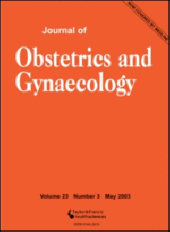
Obstet Gynecol. 1989 Sep;74(3 Pt 2):434-7.
Maternal brain death and prolonged fetal
survival.
Bernstein IM, Watson M, Simmons GM, Catalano PM, Davis G,
Collins R.
Department of Obstetrics and
Gynecology, Medical Center Hospital, Vermont, Burlington.
A 30-year-old woman suffered
massive brain injuries after a motor vehicle accident at 15
weeks' gestation.
The patient was
diagnosed as brain-dead on her tenth hospital day. She was
supported with intensive care for 107 days after this
diagnosis, and a normal 1555-g male infant was
delivered at approximately 32 weeks' gestation by repeat
cesarean section. The child is developing normally at 11
months of age.
This represents the
longest reported case of prolongation of pregnancy after
brain death
__________________________________________________________
Minerva Anestesiologica
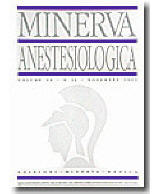
A Journal on
Anesthesiology, Resuscitation, Analgesia and Intensive Care
Minerva Anestesiol. 1992 Nov;58(11):1247-52.
Brain death and prolonged fetal survival
[Article in
Italian]
Antonini C, Alleva S, Campailla MT,
Pelosi G, Valle E, Verrua M, Zamponi E, Blanda A, Gambaro C.
Facoltà di Medicina e Chirurgia,
Università degli Studi di Torino.
The Authors presents in detail a
case of a 25-year-old primigravida that had fatal
intracranial bleeding at the
beginning of the
15th week of gestation, whose vital function are sustained
for 49 days. Despite the insuccess to bring the pregnancy to
a gestational period favorable to induce the delivery,
they analyse the problems connected to the maternal
maintenance and to the fetal growth.

|